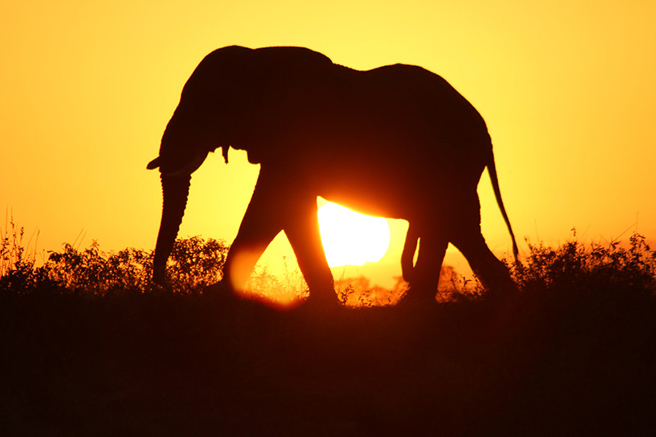Behind the Legal, Domestic Ivory Trade, a Black Market Flourishes

In 1989, after a decades-long spate of elephant poaching and failed regulation of the commercial trade in ivory, the Convention on International Trade in Endangered Species of Wild Fauna and Flora (CITES) finally made the decision to ban international trade in African elephant ivory.
Though the ban granted many elephant populations in Africa a reprieve, it was short-lived. Countries, including the United States, China, and Japan, continued to allow the legal trade of ivory within their own borders, which kept the culture of ivory worship on life support. At the same time, CITES allowed Japan, then China and Japan, to purchase large caches of accumulated ivory in select African countries with well-managed elephant populations in 1999 and 2009, respectively.
The CITES-sanctioned sales coincided with rising affluence in many parts of Asia, especially China, where the nouveau riche craved the kind of culturally significant luxury item that would show off their new wealth.
“It so happens the sales sent a message to the marketplace that it was okay to buy ivory again,” says AWF CEO Patrick Bergin. “Unfortunately that marketplace was—is—large and growing exponentially.”
In China, demand for ivory has exploded, and the country’s legal trade has served only to conceal the illegal trade. The Environmental Investigation Agency estimates 90 percent of ivory for sale in China is illegal.
Contends Bergin, “Consumers are more than likely buying ivory that came from a brutally poached elephant in Africa, which is why we must stop buying, selling, and coveting ivory altogether rather than try to regulate the trade.”
The suggestion appears to have public support in China: A poll conducted in China by AWF’s partner, WildAid, found that while 50 percent of respondents did not think elephant poaching was common, once informed of Africa’s elephant poaching crisis, 94 percent were in favor of a government-imposed ban on ivory.
Shifting winds
“We hope to see the events in Denver, Dongguan, and Paris soon repeated in Hong Kong, Bangkok, and Dar es Salaam, [Tanzania],” says AWF’s Philip Muruthi, senior director of conservation science. Muruthi is referring to the recent destruction of government stockpiles in the United States, China, and France.
With its connections to organized crime and terrorism, combating elephant poaching and ivory trafficking is no longer the sole concern of the conservation community. Many countries are cracking down on wildlife crime by using new legislative and law enforcement tools. In January, a Kenyan court handed down the harshest sentence yet to a Chinese national convicted of smuggling ivory—a fine of 20 million Kenyan shillings, approximately US$230,000, or seven years in jail. In the United States, the government’s new National Strategy for Combating Wildlife Trafficking takes a “whole government” approach to combating the illegal wildlife trade. The strategy calls for a countrywide ban on ivory trade.
“We want elephants or we want ivory, but we cannot have both,” says Muruthi. “It’s time the world cured itself of its ivory addiction.”
